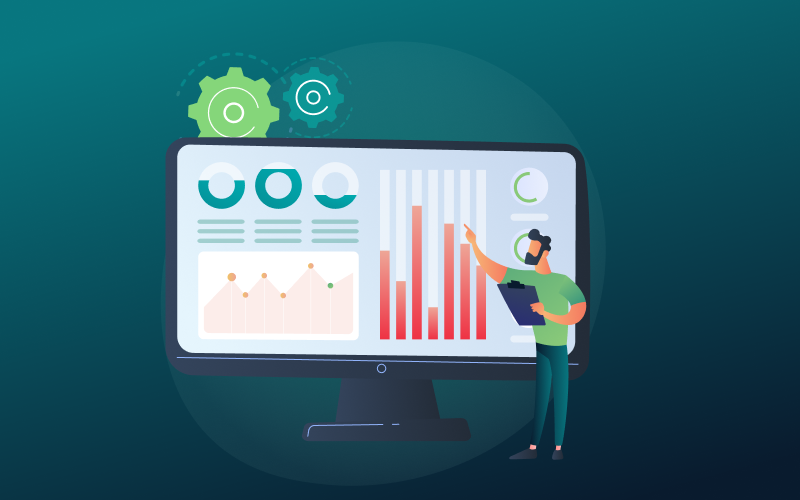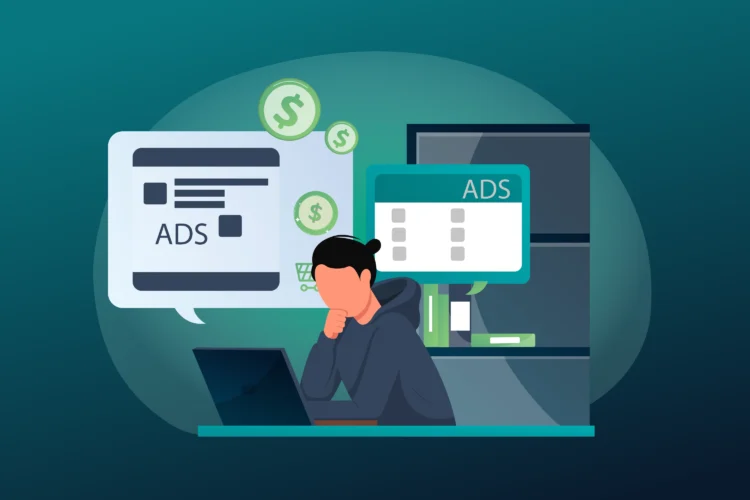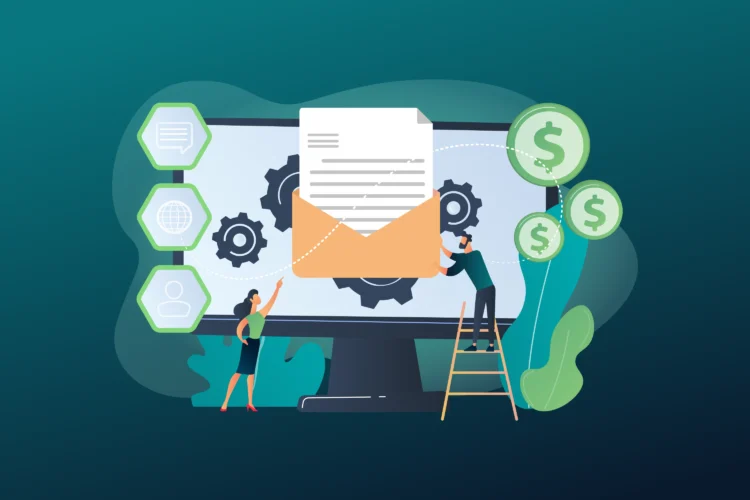
Intro
PPC (pay-per-click) advertising, unlike SEO and some other forms of digital marketing, will show first results pretty fast. If you set up your campaign right, people will start coming, and you will see an uptick in visits, and eventually – conversions. If not, then you should reconsider your paid marketing strategy and approach.
But, showing results fast is one thing, ensuring you are optimally spending your budget is something entirely different.
This article will give you some crucial paid marketing metrics for B2B SaaS companies. Keeping a close eye on these will tell you a lot about the health of your PPC for SaaS campaign and whether or not it is on point, or if it is wasting your valuable budget away for suboptimal results.
Also, before you start wrapping up your paid ads campaigns, make sure you learn more about 10 effective SaaS paid marketing strategies you should implement for B2B SaaS. These strategies can significantly enhance your approach to PPC and ensure that you’re not only attracting visitors but also effectively converting them into leads and customers.
PPC campaign optimization metrics
While there are many more statistics you should keep an eye on, the five ad campaign optimization metrics that follow are absolutely crucial if you want to get the best ROwe from your PPC efforts:
#1 Cost per click
Cost per click is an integral part of pay-per-click ads, as the name suggests. This simple formula will be at the heart of your efforts, and PPC budgeting estimates:
Total PPC marketing spend / Number of clicks = cost per click
In other words, you will have a hard number that will tell you how much it costs you to get a person to click on one of your ads. If your optimization efforts result in lowering CPC, you know you are on the right track.
#2 Cost per lead/acquisition
Cost per lead (CPL) in terms of PPC describes the amount of money you need to pay to get one lead from your PPC ad campaign. A lead is more than a visitor, as the person took a specific action, such as signing up for your newsletter or filling a contact form, highlighting them as a potential customer.
Cost per acquisition (CPA) takes this a step further – it will tell you how much you need to pay for your PPC campaign to get a single conversion. Therefore, CPA is one of the most important metrics for your entire business, as it will tell a lot about your sales and marketing efficiency.
Simply put, if you pay $500 to get 5 leads, your CPL is $500/5=$100. If you convert one of those leads into a paying customer, your CPA will be $500/1=$500.
While this $500/customer can feel enormous, if that one lead signs up for your $99/mo package, and opts to pay yearly to get a discount, you will instantly turn a profit, even if they decide against continuing to use your product in the future.
#3 Sign-up or Free Trial conversion rate
The sign-up conversion rate will help you determine how many visitors came to your website or landing page by clicking on an ad and signed up for your product.
It is calculated by dividing the number of sign-ups by the total number of clicks or landing page views and multiplying that number by 100%. So, if you had 100 clicks that resulted in 5 sign-ups, your sign-up conversion rate would be:
(5/100)X100%=5% sign up conversion rate
This metric will tell you a lot about the quality of the ad copy and landing page. If the offer was on-point and convincing, visitors will do what you intended, and you will see a rise in sign-ups.
However, if the ad works, and they come to the site, but they decide against signing up, something is wrong. You will need to figure out why the ad was misleading, and how you can improve it, as the visitors didn’t get what they were hoping for when they came to your site.
#4 Ad relevance – Facebook ads
If you are running Facebook ads (which you should definitely do), one of the most important metrics to keep an eye on is ad relevance. It is tied directly to your target audience and will uncover how well the ad is penetrating the market it is intended for.
Facebook will show ad relevance on a scale from 1 to 10, the higher, the better. Higher ad relevance will mean each of your ads is more efficient, resulting in a lower CPC of your Facebook ad campaign, which is the #1 stat we discussed in this section.
#5 Keyword quality score – Google ads
Google ads keyword quality score, similar to Facebook’s ad relevance score, is rated from 1 to 10 and will tell you a lot about your ad campaign.
This metric will tell you how your ad performs to your competition but also takes into account the relevance the keyword has to the target group and for ad triggers.
The higher the score is, the lower CPC will be, but also the ad will have better positioning, and more impressions. Therefore, keeping a close eye on this single metric and ensuring the keyword quality score stays as close to 10 as possible is going to be crucial, at least if you want to run campaigns optimally.
Business metrics – impacted by paid marketing activities
PPC metrics alone are just numbers – how they impact your business is what matters. Below, we will list some criteria that can help you determine how well your marketing and sales efforts are impacting your core business.
If you want to learn more about B2B SaaS Customer Acquisition Metrics, we have a detailed guide in one of our previous blog posts
#1 CAC payback period
The customer acquisition cost (CAC) payback period will tell you how long it will take you to recover the money invested in acquiring a new customer, and start turning a profit from them. Customer acquisition isn’t free, and tracking the CAC payback period is one of the most important metrics for a healthy cash flow.
The CAC payback period is calculated by dividing the total costs you had acquiring a customer (CAC) by the average revenue generated per account (ARPA) multiplied by your gross margin percent. The number you get will tell you how many months need to pass for you to start making a profit.
For example, if you invested $5000 into customer acquisition, and you generate a $1500 ARPA with a 15% gross margin, your CAC payback period will be:
$5000/($1500×0.3) = 11.11 – it will take a little over 11 months to recover CAC, which means you will start making a profit if you retain that customer over a year.
Of course, the lower the advertising costs are and the more efficient your campaign is, the lower the CAC payback period will be, which is another reason for optimizing your campaign. You can also lower it by increasing the prices, or by increasing the amount of money you earn per customer, but all of that is much more complicated than ensuring you spend your ad budgets wisely.
#2 Sign up to paid customer conversion rate
If you offer a free tier/plan, you know the struggles of convincing a free user to become a paid customer. The total number of users alone can be a simple vanity metric unless your sign-up to paid customer conversion rate is high. You are running a business, and paid users are what covers the costs of servers, support, development, marketing, sales…
This metric can work for other types of sign-ups, not only free plans – trial periods, leads, newsletter opt-ins, etc. But, for SaaS businesses that offer a free(mium) plan, the percentage of users that converts to paid plans is what matters the most.
It is calculated simply by dividing the number of paid customers by the number of signups and multiplying that number by 100%. So, if you have 50 paid customers resulting from 500 signups, your sign-up-to-paid customer conversion rate is 10%.
#3 Time to convert period
While direct marketing and sales costs such as labor and tools matter, the time it takes to convert a lead who just entered your funnel into a paid customer is vital.
Cutting the time to convert period will reduce total marketing and sales costs while simultaneously improving your cash flow, as you will see the money coming in sooner. This will also improve your margins, and give you more room for error and for trying different tactics, further improving your campaign.
The idea is to track how long it takes for each lead to convert, average that number, and then try to reduce it over time. Of course, you can segment users by packages they opt for once they convert, or by the amount of money spent upon their initial purchase, or filter them in other ways suitable for your particular business case – but the general rule is that the shorter the time to convert period is, the better.
#4 Customer LTV
Lastly, we have customer lifetime value (LTV), which is a key metric to determine the long-term health of your business. Considering it can cost up to seven times more to acquire a new customer than to hold on to an existing one, ensuring you retain customers is the make-or-break condition of any SaaS business.
This becomes especially important when combined with other metrics we discussed in this article. It takes a lot of time to convert visitors into leads, and then to push those leads through the funnel and convert them into free users, or those who sign up for a free trial period. Then, only a fraction of those leads/users will convert into premium customers – and only then you start making money.
If you do things right, you will not only recover your investment but enter profit. The longer you retain customers and keep them happy, the bigger your profit will be, which will let you expand your business further.
However, if you fail, and customers start abandoning your product and start canceling their premium plans soon after signing up, your whole business is at risk. In the end, retaining paid customers and turning a profit is what it is all about – all other metrics are practically meaningless if your business isn’t in the green.
Our process (secret sauce)
When it comes to using metrics to inform our paid marketing strategy, we employ a comprehensive, data-driven approach that takes into consideration both pre-click and post-click metrics. This allows us to optimize campaigns holistically, ensuring that each component of the marketing funnel is performing effectively.
Here’s an outline of our process:
Pre-Click Metrics
- We closely monitor Google Ads metrics, such as CTR, CPC, and Quality Score, to gauge the relevance and effectiveness of our ad creatives and keyword targeting.
- By analyzing these metrics, we can identify areas for improvement, such as refining ad copy, adjusting keyword bids, or exploring new keyword opportunities with better intent.
Post-Click Metrics
- After driving users to the landing page, we focus on conversion rate, bounce rate, and average time spent on the page to assess the performance of the landing page and its ability to persuade prospects to convert.
- By evaluating these metrics, we can pinpoint any friction points in the conversion process and optimize the landing page accordingly. This might involve A/B testing different headlines, CTAs, or page layouts to find the most effective combination.
Cross-Channel Analysis
- In addition to analyzing metrics individually, we also evaluate the relationship between pre-click and post-click metrics to identify any inconsistencies or areas of disconnect.
- For example, if a high CTR is accompanied by a low conversion rate, it might indicate a mismatch between the ad messaging and the landing page content. In such cases, we would work to align both elements more closely to ensure a seamless user experience.
Continuous Optimization
- Metrics are continuously monitored and analyzed throughout the campaign, allowing us to make data-driven decisions and adapt our strategy as needed.
- We set up custom dashboards and reports to track key performance indicators (KPIs) and share insights with clients, ensuring that our efforts are aligned with their business goals.
By segmenting metrics into these categories and consistently analyzing their performance, we can develop and optimize strategies that maximize ROI we and drive growth for our clients. This data-driven approach enables us to deliver impactful results, regardless of the specific business or industry we are working with.
Wrapping up
The Paid marketing metrics for B2B SaaS Companies we discussed here are not the only things you should keep an eye on. But, if you manage to keep your CPC, CPA, CPL, Sign up conversion rate, ad relevance, and keyword quality score, and if you monitor the impact they have on your business, you will have the basics covered, setting a solid foundation for the rest of your campaign.
Of course, PPC advertising is much more complicated, and it should only be one part of your digital marketing campaign. The only way to ensure your business stays ahead is to take full advantage of all marketing opportunities, especially in the digital world, and stay persistent.
If you do that, the results will follow, and you will have a steady stream of leads, users, and customers flowing your way – your job is to keep them by offering the best quality B2B SaaS product you can.
Need help setting up the perfect paid advertising strategy for your B2B SaaS business? Give us a call – we’ll have your conversions up, running and counting in no time!
Author
Jovan
Creating growth strategies for B2B SaaS products is one of my specialties. Over the last seven years, I've worked closely with a number of SaaS founders, VPs of marketing, and marketing managers to help them scale their businesses faster by applying growth marketing approaches. Goals. Grow and expand the agency to help even more B2B SaaS businesses.








